
Ever felt the frustration of using the wrong drill bit on a project? I’ve been there, and trust me, choosing the right one can make all the difference.
Low-pressure DTH drill bits are ideal for softer sedimentary rocks like limestone, chalk, claystone, siltstone, and sandstone. These bits operate efficiently under lower air pressures, offering a cost-effective solution when high penetration rates aren't necessary.
Understanding which rocks align with low-pressure DTH bits is crucial, but there's more to it. Imagine standing in front of a massive limestone wall, knowing your equipment is up to the task without breaking the bank or your patience. Let's dive into how these bits thrive in various geological conditions and why they might be your next go-to choice.
Low-pressure DTH bits are ideal for granite drilling.False
Granite is a hard rock, unsuitable for low-pressure DTH bits designed for softer rocks.
Limestone is suitable for low-pressure DTH drill bits.True
Limestone is a softer sedimentary rock, making it ideal for low-pressure DTH bits.
Why are carbonate rocks perfect for low-pressure DTH drilling?
Remember that time you struggled with a stubborn rock while drilling? Well, some rocks are your best friends!
Carbonate rocks, like limestone and chalk, are great for low-pressure DTH drilling. Their soft, porous nature allows for smooth drilling with less wear on the equipment and reduced energy consumption.

Characteristics of Carbonate Rocks
I remember my first encounter with limestone during a drilling project. It was like butter compared to the granite slabs we had been tackling all week. The ease with which we penetrated the limestone was a game-changer. That's because carbonate rocks, such as limestone and chalk, are inherently soft and porous. This softness not only makes them easy to drill through but also ensures that the equipment doesn't wear out quickly, saving time and money.
| Property | Description |
|---|---|
| Softness | Facilitates smooth drilling with low energy |
| Porosity | Helps manage dust and debris effectively |
Advantages in Low-Pressure Applications
From my experience, the real beauty of using carbonate rocks1 in low-pressure DTH drilling is how efficiently they cut through without guzzling energy. In scenarios like water well drilling or shallow explorations, where efficiency is crucial, these rocks shine. Their softer texture reduces resistance, which translates to less energy consumption and fewer maintenance headaches.
- Efficiency: The softer texture minimizes resistance during drilling.
- Cost-Effectiveness: Reduced wear translates into lower maintenance costs.
Comparing Carbonate Rocks to Other Sedimentary Types
I've had the pleasure (and sometimes the pain) of working with various sedimentary rock types. While carbonate rocks2 are ideal for low-pressure DTH drilling, siltstone and claystone present different challenges. For example, claystone's plasticity can be a real headache, requiring careful handling to prevent clogging the drill bits.
| Rock Type | Drilling Suitability |
|---|---|
| Limestone | Excellent for low-pressure, non-abrasive |
| Chalk | Even softer, ensuring very efficient drilling |
| Claystone | Challenges due to plasticity, needs careful handling |
These experiences have taught me that choosing carbonate rocks can make a world of difference in efficiency and cost-effectiveness, especially when dealing with low-pressure settings. Their natural softness and ability to handle debris efficiently make them an excellent choice for drilling applications3.
Carbonate rocks are mainly composed of calcium carbonate.True
Calcium carbonate is the primary component, making them less abrasive.
Claystone is more suitable than limestone for low-pressure drilling.False
Claystone's plasticity presents challenges, unlike limestone's suitability.
How Do Low-Pressure DTH Bits Revolutionize Limestone Drilling?
Ever wondered why low-pressure DTH bits are a game-changer for limestone drilling? Let me share some insights from my journey in the industry.
Low-pressure DTH bits are perfect for limestone drilling due to their efficient penetration and minimal wear. They excel in soft sedimentary rocks, providing a cost-effective solution for construction and industrial applications.
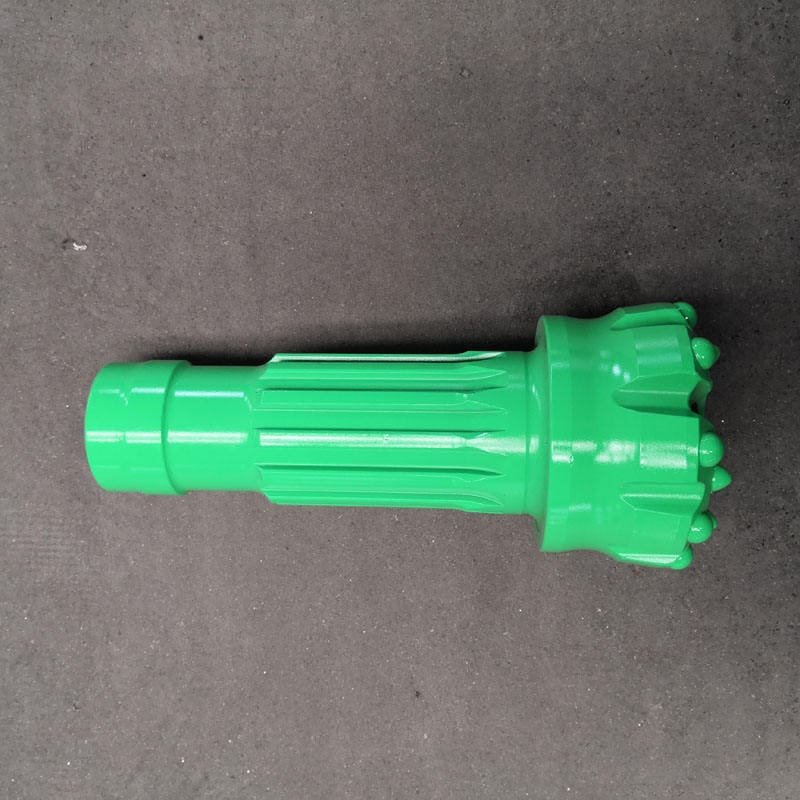
Advantages of Using Low-Pressure DTH Bits
I remember the first time I realized just how transformative low-pressure DTH (Down-the-Hole) bits could be. It was during a project where we were tasked with drilling through limestone—a material known for being soft yet deceptively tough on equipment. These bits, operating at air pressures between 7 to 10 bar, were like a breath of fresh air, offering the right balance of power without wearing out our gear prematurely.
| Advantages | Description |
|---|---|
| Cost-Effectiveness | Lower operating pressure leads to reduced energy consumption and operational costs. |
| Extended Bit Life | Reduced wear and tear due to softer rock compatibility extends the bit's lifespan. |
| Efficient Drilling | Achieves clean holes with moderate penetration rates, beneficial for construction projects. |
Applications in Limestone Drilling
Limestone is everywhere in construction, and for good reason. It's versatile and reliable, but drilling it requires finesse. I've seen firsthand how low-pressure DTH bits make a difference when laying foundations or constructing roads. Their ability to drill efficiently without excessive wear maintains productivity while keeping costs in check.
- Building Foundations: The balance of efficiency and low wear makes these bits suitable for creating stable foundations.
- Road Construction: They help achieve precise drilling, ensuring road safety and durability.
Technical Insights into DTH Bits
What makes these bits so effective is their design, which I learned to appreciate deeply. They're crafted for optimal debris removal and reduced clogging—crucial when dealing with porous materials like limestone.
- Drill Design: These bits often feature robust flushing mechanisms to handle the accumulation of drill cuttings effectively.
- Operational Flexibility: Adaptability to different drill rigs enhances their utility across various projects.
Learn more about DTH drilling techniques4 and see how they are reshaping modern construction practices.
By harnessing the power of low-pressure DTH bits, I’ve been able to guide teams towards more economical and effective limestone drilling operations. This approach ensures we meet the demands of contemporary projects with precision and efficiency. For more insights, check out case studies5 on successful implementations in similar environments.
Additional Considerations
When you're in the field selecting drill bits for limestone, keep in mind the hardness and porosity of the rock. Trust me, these factors will heavily influence your choice of bit design and operational parameters. Consulting with drilling experts6 can provide deeper insights into optimizing your drilling strategy.
Low-pressure DTH bits reduce energy consumption in limestone drilling.True
Operating at lower pressures decreases energy use, cutting costs.
High penetration rates are crucial for low-pressure DTH bit efficiency.False
Moderate penetration rates suffice, focusing on cost and wear reduction.
Why is Chalk Ideal for Low-Pressure Drilling Applications?
Have you ever wondered why chalk, that humble white rock, is a favorite in low-pressure drilling?
Chalk is perfect for low-pressure drilling due to its soft and porous nature, allowing efficient penetration with minimal wear on drill bits. This makes it ideal for applications like foundation drilling and excavation.
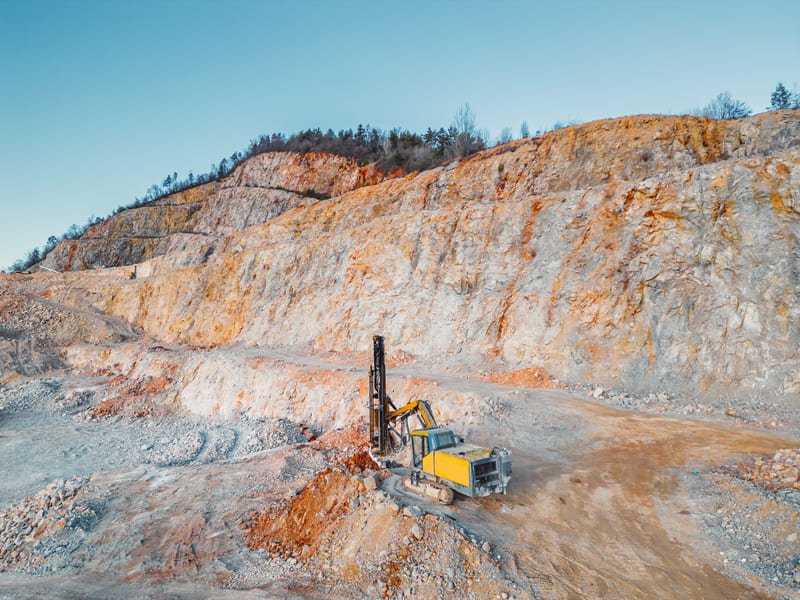
Characteristics of Chalk
Chalk, which I’ve always found fascinating since my first geology class, is a type of limestone made mostly from calcite. Its soft texture and porosity are what make it shine in low-pressure drilling scenarios. Imagine trying to drill through a block of cheese; that’s how effortlessly a drill bit can work through chalk. This means less energy wasted and tools lasting longer – a huge plus when you're trying to keep costs down and efficiency up.
Drilling Efficiency
I once stood on a site where we were using low-pressure DTH (Down-the-Hole) drill bits to cut through layers of chalk. It was like watching an artist carve through clay – smooth and almost poetic. Chalk breaks down into fine particles with ease, which means less strain on the equipment and fewer worries about debris clogging up the works. The porous nature7 of chalk really helps in sweeping away those particles, maintaining a clean operation even in less-than-ideal conditions.
| Characteristic | Impact on Drilling |
|---|---|
| Softness | Reduces energy requirements |
| Porosity | Enhances debris management |
| Low Density | Increases penetration efficiency |
Applications and Benefits
Think beyond the usual construction projects; chalk has got its foot in the door of numerous applications. From foundation drilling to environmental sampling, it's like the Swiss army knife of rocks. Its ease of drilling slashes operational costs and reduces downtime, which any project manager will tell you is invaluable. I've seen entire projects pivot towards using chalk simply because it streamlines the whole process.
Comparative Analysis with Other Sedimentary Rocks
When you stack up chalk against other sedimentary rocks like siltstone or claystone, it's almost no contest in low-pressure environments. Siltstone can be a nightmare with its tendency to clog, but chalk's naturally open structure avoids that mess entirely. It's no wonder I often find myself recommending chalk for its versatility8 in diverse geological settings.
Chalk's softness reduces drill bit wear.True
Chalk's soft texture minimizes resistance, decreasing tool wear during drilling.
Siltstone is more porous than chalk.False
Siltstone is less porous, leading to potential clogging issues unlike chalk.
Are Low-Pressure DTH Bits Suitable for Clay Rock?
I remember the first time I faced clay rock with drilling equipment—it felt like trying to cut through butter with a spoon. But are low-pressure DTH bits the right tool for the job?
Yes, low-pressure DTH bits can effectively handle clay rock by using specially designed flushing mechanisms. These tools are both efficient and cost-effective, ideal for softer formations like claystone.
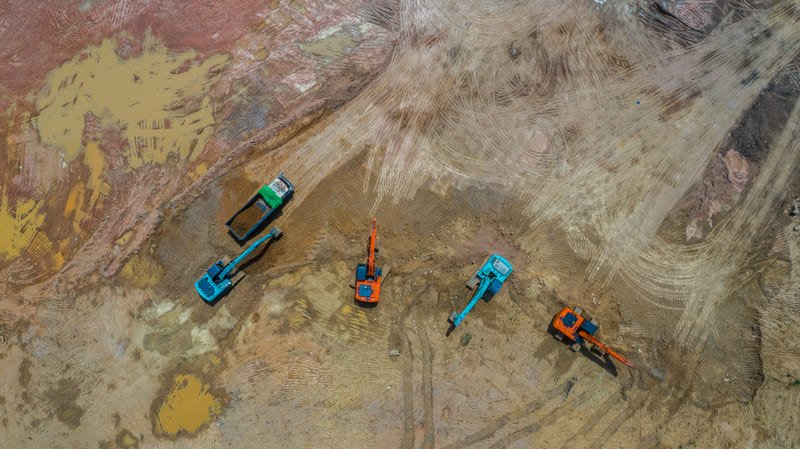
Understanding Clay Rock Characteristics
Picture this: you're knee-deep in a drilling project, and clay rock is turning your progress into a slow crawl. Its fine-grained particles and plasticity make it a notorious clogger, kind of like trying to shovel snow with a rake. To tackle these hurdles, specific drilling techniques9 are essential to keep things moving smoothly and avoid the dreaded downtime.
How Low-Pressure DTH Bits Function
Now, let's talk about low-pressure DTH (Down-the-Hole) bits. These bits are like the easy-going friend at a party—they don't need to show off to get the job done. Operating at air pressures of 7 to 10 bar (100 to 145 psi), they’re perfect for softer formations such as clay rock. The design emphasizes cost-effectiveness and moderate penetration rates, which makes them a practical choice when you don't need to break the bank or your equipment.
| Feature | Description | Benefit |
|---|---|---|
| Pressure Range | 7 to 10 bar | Suitable for soft formations |
| Design Focus | Efficiency & Cost | Ideal for low-depth drilling |
Flushing Mechanisms: The Key to Success
Here's the secret sauce: effective flushing mechanisms. Imagine trying to vacuum a floor without a bag—it just wouldn't work. These mechanisms help clear debris, avoiding blockages that could slow down the drilling process. This step is vital in maintaining peak performance, especially in claystone formations10.
Practical Applications and Considerations
When it comes to using low-pressure DTH bits in clay rock, selecting the right bits with compatible flushing systems is crucial. Think of it as choosing the right shoes for hiking—you want something that will last and keep you comfortable. Regular maintenance is key to preventing clogging and ensuring a smooth drilling process. Contractors often rely on these setups for water well drilling and shallow mineral explorations where clay deposits are common.
Advantages of Using Low-Pressure DTH Bits
- Cost-Efficiency: Lower operational costs due to minimal wear.
- Adaptability: Suitable for various sedimentary rocks.
- Reduced Energy Consumption: Perfect for environments where conserving energy is crucial.
In summary, low-pressure DTH bits can be your go-to solution when dealing with clay rock. Just remember, pairing them with the right equipment and techniques is the key to unlocking their full potential in these tricky geological conditions.
Low-pressure DTH bits are ideal for clay rock drilling.True
They operate effectively at 7-10 bar, suitable for soft formations.
Clay rock drilling requires high-pressure DTH bits.False
Low-pressure bits suffice, as high pressure isn't needed for soft formations.
Is Siltstone Suitable for Low-Pressure Drilling?
Have you ever wondered if siltstone is the right choice for low-pressure drilling? It’s a question that might seem niche, but it’s crucial for those of us in the drilling industry. Let’s explore together.
Siltstone is a viable option for low-pressure drilling because its fine-grained texture and moderate hardness allow for efficient penetration without excessive wear on equipment, making it perfect for environmental and light construction tasks.
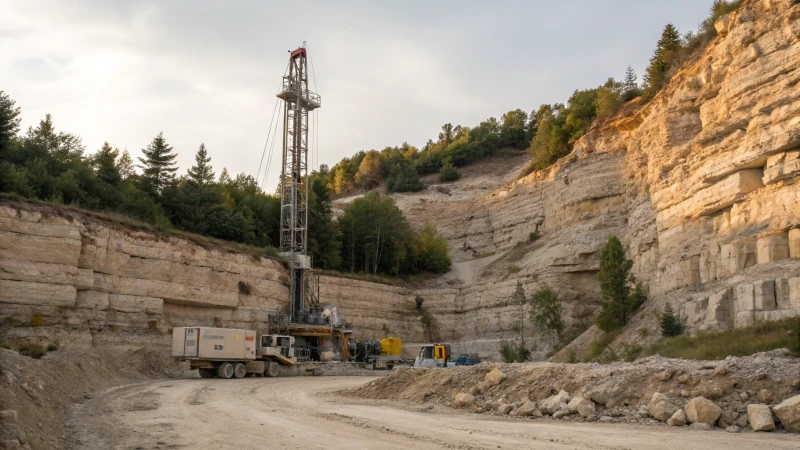
Diving into Siltstone: What Makes It Special?
When I first heard about siltstone, I was curious about its potential in the field of low-pressure drilling. Siltstone is intriguing because it sits comfortably between clay and sandstone in terms of hardness. It’s composed primarily of silt-sized particles, which gives it a unique texture. Imagine a rock that's not too hard to drill through but not so soft that it crumbles under pressure. That balance makes it a sweet spot for low-pressure applications.
Why Low-Pressure Drilling and Siltstone Are a Good Match
I remember working on an environmental sampling11 project where siltstone was the main rock type. We opted for low-pressure DTH drills, operating at around 7 to 10 bar (100 to 145 psi), because these drills are efficient and cost-effective. They penetrated the siltstone smoothly without causing excessive wear on our equipment. This experience highlighted just how suitable siltstone is for precise applications where you can't afford to go overboard with power.
Overcoming Challenges with Siltstone
While siltstone's softness can be a boon, it also presents challenges. For instance, I’ve learned that managing debris is crucial since silt particles can quickly obstruct the drilling path. Effective flushing mechanisms are essential to keep the process running smoothly. And let’s not forget the importance of choosing the right bit to ensure efficiency and prevent premature wear.
Siltstone vs. Other Sedimentary Rocks: A Quick Comparison
In my experience, selecting the right rock type for your drilling project can make all the difference. Here’s how siltstone compares to other sedimentary rocks:
| Rock Type | Ideal Drilling Method | Common Applications |
|---|---|---|
| Limestone | Low-pressure | Construction, Industrial Applications |
| Siltstone | Low-pressure | Environmental Sampling, Light Construction |
| Sandstone | Medium-pressure | Quarrying, Structural Projects |
Understanding these differences is key to selecting the best approach for your specific drilling needs. Each rock type brings its own challenges and advantages, and delving deeper into sedimentary rock properties12 can significantly enhance decision-making in field operations.
Siltstone is softer than sandstone.True
Siltstone is composed of finer particles, making it softer than sandstone.
Low-pressure drills are ineffective on siltstone.False
Low-pressure drills efficiently penetrate siltstone, balancing cost and efficiency.
Why Are Low-Pressure DTH Bits Ideal for Sandstone Drilling?
Have you ever found yourself marveling at the intricacies of drilling through sandstone? It's like trying to carve a masterpiece out of a giant sandy cake. But how exactly do low-pressure DTH bits make this task easier?
Low-pressure DTH bits are perfect for drilling in sandstone environments as they efficiently operate at moderate pressures, balancing cost and performance. They ensure effective penetration without causing excessive wear.
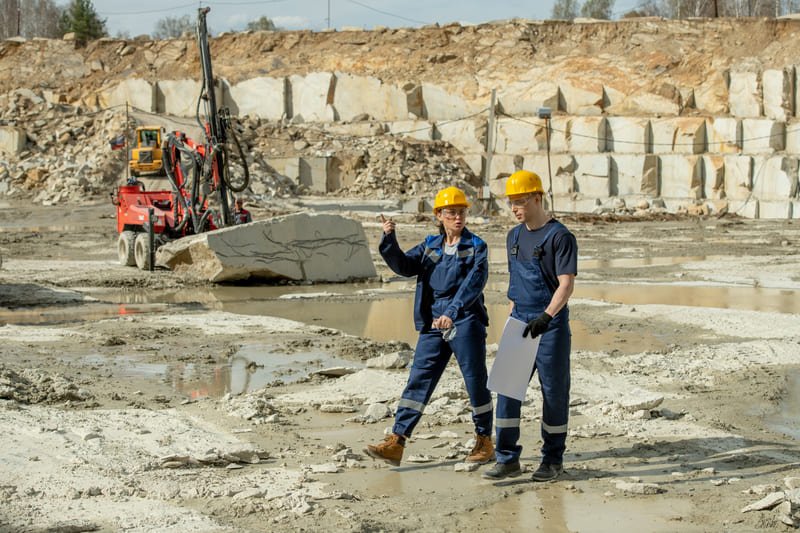
Understanding Sandstone Characteristics
Imagine walking on a beach, and under your feet, there are tiny grains of sand held together. That's pretty much what sandstone is like. It’s a sedimentary rock made up of sand-sized minerals or rock grains, and drilling through it is no small feat. I remember standing on a drilling site, watching as the machine bit its way into the ground, thinking about how this mix of cohesiveness and abrasiveness could vary so much, almost like each sandstone was telling its own story. Typically, sandstone is softer and less dense compared to other rock types, making it an ideal candidate for low-pressure drilling methods.
- Cohesiveness: Can range from loosely packed to tightly bonded grains.
- Abrasiveness: Over time, it can wear down bits like a stubborn piece of sandpaper.
Advantages of Low-Pressure DTH Bits
Operating between 7 and 10 bar air pressures, low-pressure DTH bits are like the gentle giants of the drilling world. They’re perfect for sandstone because you don’t need to punch through with brute force; instead, it's about finesse. It's like using a spoon to carve ice cream – you don't want to shatter it, just scoop it smoothly.
- Cost-Effectiveness: These bits are like the thrifty yet efficient option, ensuring you get the job done without breaking the bank.
- Reduced Wear and Tear: Lower pressures mean these bits last longer, saving you from frequent replacements.
Performance Insights
When using low-pressure DTH bits in sandstone environments, several factors play a role in how well they perform:
| Factor | Impact |
|---|---|
| Grain Size | Smaller grains reduce bit wear. |
| Moisture Content | Higher moisture may ease drilling. |
| Cementation Strength | Stronger cementation requires more force. |
Practical Applications
The versatility of low-pressure DTH bits truly shines in applications like water well drilling and shallow mineral explorations. I’ve seen them in action, creating precise holes without any rush – kind of like crafting something with care rather than force.
Consider using low-pressure DTH bits in:
- Water Well Drilling
- Environmental Drilling
- Construction Projects
Optimizing Performance with Best Practices
To get the best results when working with sandstone:
- Choose the Right Bit Type: Ensure compatibility with the drilling system13 you’re using.
- Monitor Air Pressure: Keeping it just right avoids unnecessary wear.
- Regular Maintenance: Keep an eye out for wear and replace bits when needed.
Understanding these nuances can make a big difference in drilling efficiency and cost-effectiveness. For more details on different drill bit types suitable for sedimentary rocks, check out DTH bit varieties14.
Low-pressure DTH bits reduce wear in sandstone.True
Operating at lower pressures reduces stress on the bit, prolonging lifespan.
High-pressure DTH bits are ideal for sandstone drilling.False
Sandstone's softer nature doesn't require high-pressure methods for effective drilling.
Conclusion
Low-pressure DTH drill bits excel in softer sedimentary rocks like limestone, chalk, claystone, siltstone, and sandstone, providing efficient drilling with reduced wear and cost-effectiveness for various applications.
-
Explore the advantages that carbonate rocks offer in various low-pressure drilling scenarios. ↩
-
Understand how carbonate rocks compare to other sedimentary types in terms of drilling suitability. ↩
-
Discover practical applications where carbonate rocks excel in low-pressure environments. ↩
-
Understand core techniques to optimize drilling processes, ensuring efficiency and precision. ↩
-
Explore real-world examples to see how these bits perform in diverse applications. ↩
-
Gain insights from professionals to enhance your drilling operations. ↩
-
Explore how porosity in chalk benefits drilling operations by facilitating debris removal. ↩
-
Understand the adaptability of chalk across different geological applications. ↩
-
Explore different methods and strategies to optimize drilling through clay rock, enhancing operational efficiency. ↩
-
Learn about effective flushing systems used in drilling operations to prevent blockages and maintain efficiency. ↩
-
Learn how low-pressure drilling in siltstone aids environmental sampling. ↩
-
Understanding various sedimentary rocks aids in selecting appropriate drilling methods. ↩
-
This link provides insights into compatible drilling systems, helping you choose the right setup for optimal performance. ↩
-
Explores various DTH bit types, guiding you in selecting the best fit for specific rock conditions like sandstone. ↩







